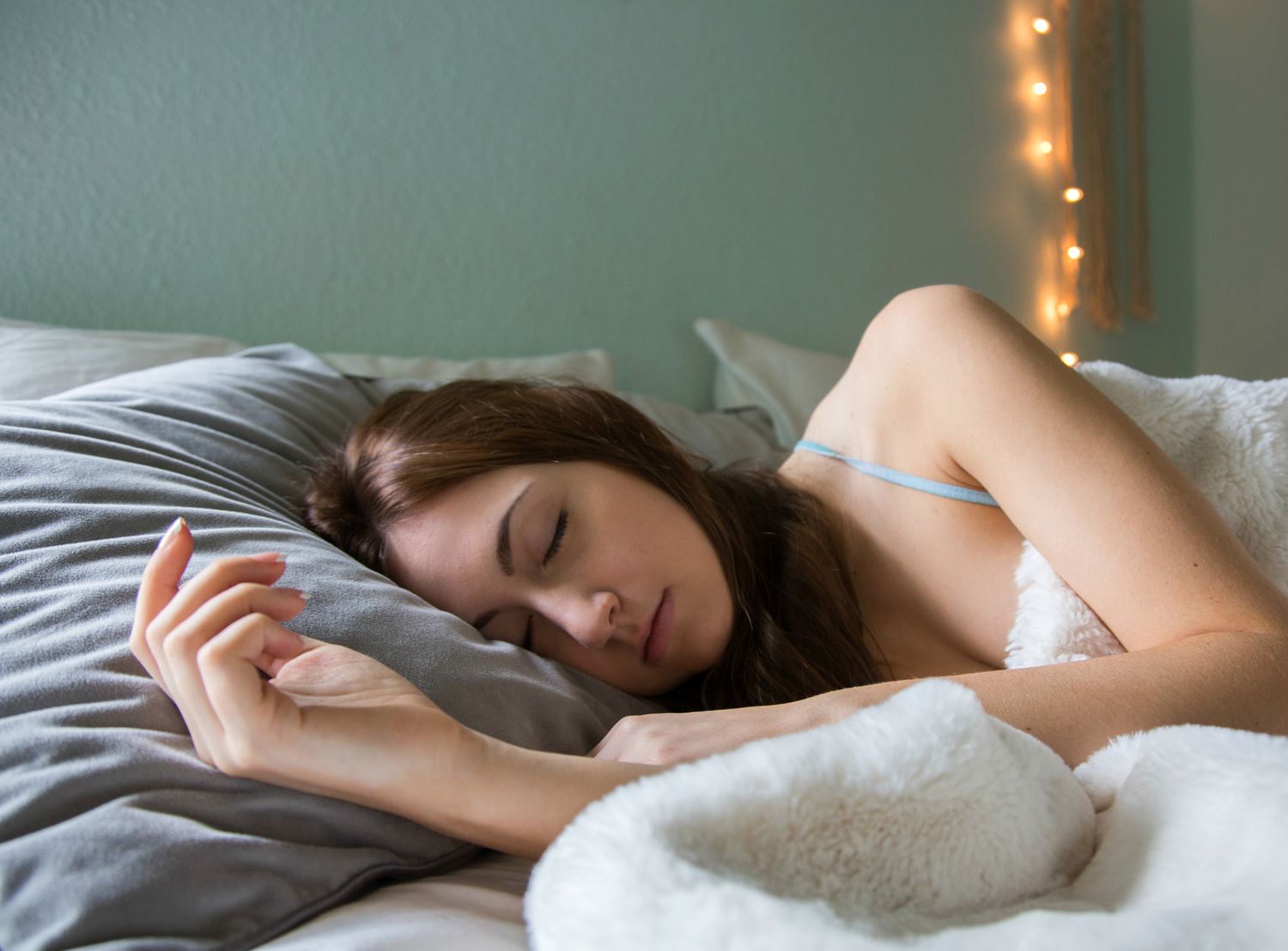Here's What Dermatologists Say About TikTok's Warning on Side Sleeping and Wrinkles

Sleep positions are a matter of personal preference. However, should those who sleep on their sides or stomachs think about altering their habits in favor of skin health?
Based on numerous TikTok posts, the potential for wrinkle development could be increased by sleep positions. The theory suggests that side and stomach sleepers, who place their faces on their pillows, cause skin to fold. As TikTok users caution, this may result in extra, unwanted lines or creases on one side of the face.
Lindsey Zubritsky, MD, stated in a video, “You can actually develop wrinkles due to how you sleep, called sleep lines. This is due to that constant pressure and gravity as your face presses against the pillow throughout the night.”
These sleep lines can appear as vertical folds on a person’s forehead, on either side of their nose, or as diagonal lines under their eyes, according to Miranda Wilson, TikToker and nurse practitioner.
“You'll notice it first as a faint line. But as you age and continue sleeping in the same position, the line will become deeper,” she said.
But can wrinkles really be caused by sleeping on your side or stomach? Though TikTok often contains questionable medical advice, dermatologists agree that these claims hold some merit.
Ife J. Rodney, MD, dermatologist and founding director of Eternal Dermatology and Aesthetics, told Health, “If you constantly sleep in a similar position on your side—which most people tend to do—you’re compressing that side of your face for seven or eight hours daily. The impact can add up.”
Dermatologists discuss the connection between skin aging and sleep, and offer advice for side sleepers to decrease their risk of wrinkles.
Experts concurred with the TikTok discussion connecting wrinkles and sleep. The issue primarily relates to the physical pressure on the face while a person sleeps.
While gravity is the sole force exerting on someone’s face when they sleep on their back, side or stomach sleepers encounter compression and stress between their face and pillow. This additional force may result in more wrinkles.
Cindy Wassef, MD, assistant professor in Rutgers Robert Wood Johnson Medical School’s department of dermatology, stated “Repeatedly sleeping this way can cause more etched lines or wrinkles over time."
However, sleep isn't the only cause of wrinkles.
“Wrinkles are caused by several factors—repeated movements, sun exposure, genetics, nutrition, and environmental factors such as pollution,” said Gary Goldenberg, MD, medical and cosmetic dermatologist and assistant professor of dermatology and pathology at the Icahn Sinai School of Medicine at Mount Sinai. "However, I've observed asymmetry in patients' wrinkles, and they claim that the deeper lines are present on the side where they sleep.”
Regardless of how they're formed, explained Rodney, all wrinkles or sleep lines tend to worsen with age. Skin elasticity, which allows the skin to return to its original shape after being stretched, decreases over time.
According to Wassef, “With age, your skin does not easily return to its natural resting state like it did when you were younger and your skin was more elastic.”
Most people sleep on their side, research indicates. This position is regarded among the best for the quality of sleep. Given that many factors contribute to wrinkles (which do not pose a health risk), no need is seen for altering one's sleep position unless desired.
However, if wrinkles are a concern, transitioning from sleeping on one's side or stomach to back-sleeping is feasible, according to W. Christopher Winter, MD, a neurologist and sleep medicine physician with Charlottesville Neurology and Sleep Medicine, and host of the Sleep Unplugged podcast.
“For most individuals, a device that makes side-sleeping difficult or uncomfortable can assist,” he noted.
This can include special belts and vibrating devices that alert the user of a change in sleep position. A simpler solution might involve positioning pillows or blankets to maintain a back-sleeping position.
However, a change in sleeping position isn't always recommended. Winter said, for those with sleep apnea or a respiratory condition, back-sleeping “is likely the worst position.” Back-sleeping in sleep apnea cases can result in gravity pulling down the tongue, jaw, and uvula, further obstructing the airway.
Whether it’s not healthy for someone to start sleeping on their back or they simply don’t want to, there are other ways for someone to lower their chance of developing wrinkles.
According to TikTok, people can try using medical tape to stop the skin from creasing, or even practice face yoga. One easy fix would be to simply try to alternate between the right and left side of the body during sleep to avoid “chronic pressure” just on one side of the face, Wassef added.
Beyond that, there are also products available that could help reduce wrinkles if someone sleeps on their stomach or side, experts said.
Sleeping on a silk pillowcase could lead to less friction on the face, said Wassef. There are also anti-aging pillows on the market—these feature a cut-out or divot, which lowers the amount of pressure on a person’s face while they sleep, she added. However, these aren’t completely foolproof solutions.
“These all in theory could help, but nothing has been scientifically proven,” said Wassef.
But if you have a good thing going in the sleep department, it may be best to focus on the skin itself—Rodney recommended talking to your dermatologist about reducing wrinkles via a skincare routine.
“Definitely use a retinol-based regimen, because it stimulates collagen to get tighter, more youthful skin,” she said.
A doctor may also suggest something like Botox or microneedling to smooth wrinkles and improve the skin’s texture, Rodney added.
Healthy lifestyle choices can also improve the skin’s appearance, and are helpful no matter someone’s preferred sleeping position—this includes staying hydrated, wearing sunscreen, managing stress, and avoiding smoking.




